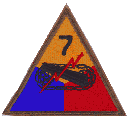

|
|
|
|
| ||||||||||||||||||||||||||||||||||||||||||||||||||||||||||||||||||||||||||||||||||||||||||||||||||||||||||||||||||||||||||||||||||||||||||||||||||||||||||||||||||||||||||||||||||||||||||||||||||||||||||
| |||||||||||||||||||||||||||||||||||||||||||||||||||||||||||||||||||||||||||||||||||||||||||||||||||||||||||||||||||||||||||||||||||||||||||||||||||||||||||||||||||||||||||||||||||||||||||||||||||||
|
|
Click on title text to see PDF of IDPF. The saying "Garbage In, Garbage Out" is a post-war saying by data analysts to explain that faulty input inevitably leads to faulty conclusions. And sadly, that was indeed the case for these five men. I have seen IDPFs that reflect excellent GRS work. And I have seen IDPFs that reflect poor to downright awful GRS work. The IDPFs of these five men are at the "poor" end of that spectrum. I will start from the "Garbage Out" (the final 1950 report) and work back in time to see if I can find anything solid in the evidence and witness interviews (if any) compiled by Graves Registration Service personnel in this file. I will also try to identify when and how the "Garbage In" happened.
|
|
Click on title text to see PDF of IDPF. While the file for Jack Lewis starts earlier, it is because his family wrote letters in 1945. As with Homer Bryan's case, there is nothing to indicate any investigation until years later. And then it is only a single summary form dated 24 May 1948 with his physical characteristics and 1942 dental record summary. It is the same failure as in Homer Bryan's case to take any initiative to find the survivors and interview them or take statements from them, the same failure to really take any initiative at all. Negligence was followed by incompetence as the same 1950 report was the conclusion for all of these cases. |
|
Click on title text to see PDF of IDPF. The same non-investigation for years was followed by obtaining extensive 1942 medical records when an abscess required the extraction of three of his teeth. Once again, there is no initiative at all taken until years after the event, and then the only initiative was to obtain the medical records. More of the same failure to honor the sacrifice of these men. |
|
Click on title text to see PDF of IDPF. The file indicates no investigation until 1948, similar to the other files. But it has one stunning set of documents. Unlike the others who had none of their personal effects returned to their family, Bernard Glazier's effects included not only his wrist watches but also his dog tags!!
|
|
Click on title text to see PDF of IDPF. His IDPF provides no additional information about his death and yet more evidence of years-delayed effort on his case and then only requesting his dental records -- the same failures as in the other cases. |
|
Click on title text to see PDF of X-File. In March 1946, after the war, a man working to remove land mines from the area west of the road from Saint Privat-la-Montagne to Amanvillers discovered the bodies of 2 American soldiers. One of those was assigned the Unknown number X-1115 for Graves Registration teams working out of the temporary U.S. Military Cemetery at St. Avold, France. A "probably" identification as Charles Iacomini of 2nd Infantry Regiment, 5th Infantry Division, proved to be wrong. (Charles Iacomini was identified as another Unknown.) First aid packets with the name "G. Lamden 42064078" were found. This was Gilbert Lamden of Kings County, New York, who is not listed among the known dead of World War II on the WWII Registry. It is not clear from the X-file just which of the two bodies found was assigned X-1115 and what happened to the other body. A hand-drawn map of the location of the grave gives the coordinates as U-760562. This is the Nord de Guerre coordinate system, with the full coordinates being VU760562. The Coordinates Translator of the EchoDelta.net web site allows us to enter the coordinates VU760562 for the Nord de Guerre Grid system. The latitude and longitude were 49°05'36"N and 6°02'17"E (decimal 49.09331° 6.03792°). Here is the hand-drawn map (PDF p 13) and also a modern map marking the location.
|
|
|
Active overview of all pages at the 7th Armored Division web site